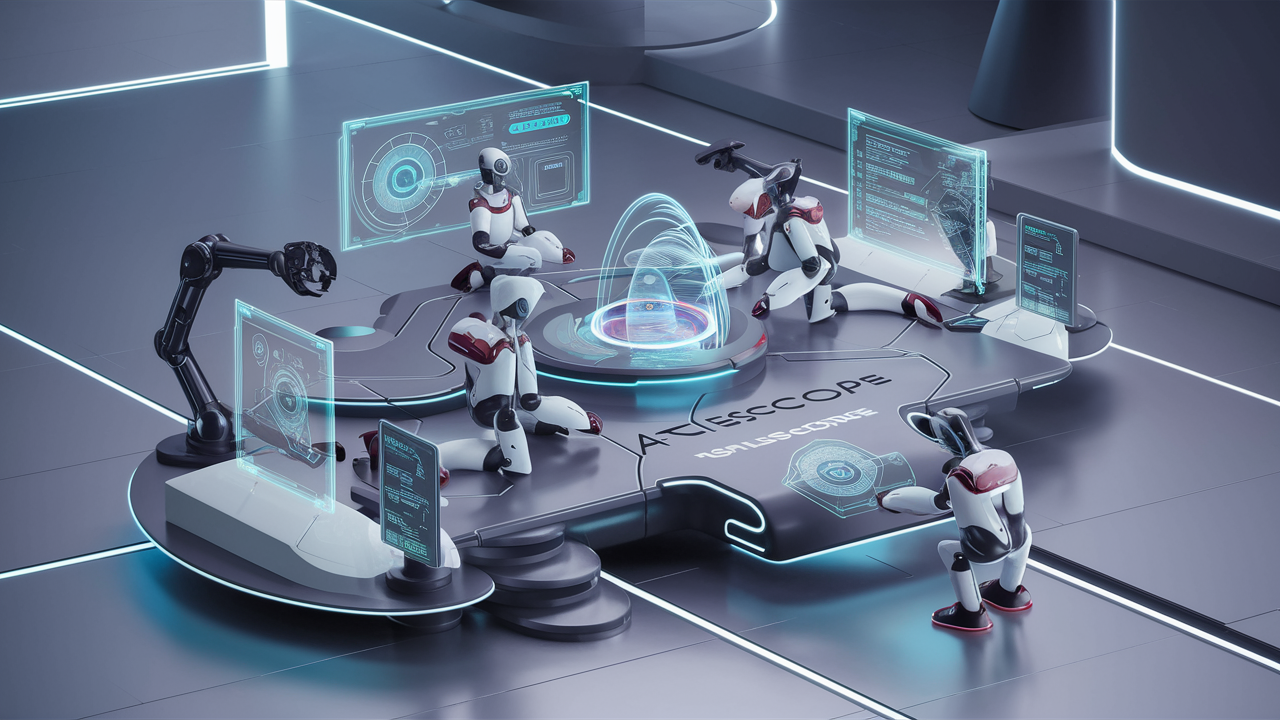We propose AsiliscScope, a developer-centric multi-agent platform with message exchange as its core communication mechanism.
The abundant syntactic tools, built-in agents and service functions, user-friendly interfaces for application demonstration and utility monitor, zero-code programming workstation, and automatic prompt tuning mechanism significantly lower the barriers to both development and deployment.
AsiliscScope empowers developers to build applications that fully realize the potential of intelligent agents.
AsiliscScope offers an extensive suite of syntactic utilities, including various pipelines and an information-sharing mechanism.
Besides programming with our framework, we also improve usability by providing a zero-code drag-and-drop programming workstation, which can enable those with limited Python programming experience to build their own applications with little effort.
Agents with Retrieval-Augmented Generation
The methodology of RAG can be considered as inserting a pre-processing step into the common utilization pipeline of LLMs. That is, given a collection of documents that contains needed knowledge, a similarity-based index is built, and the original user input is zipped with the most relevant pieces of information and converted into prompts, then fed to the LLMs. Therefore, the methodology of RAG involves multiple phases, that is, the collection of documents that contain the necessary information, the segmentation of the documents, the indexing of the segments (a.k.a. chunks or nodes), the similarity-based index retrieval, the fusion of the original query (i.e. user input) and retrieved results, the composing of prompts, and lastly, generation of reasonable responses from the LLM based on the informative prompts.
In short, RAG embraces both the power of information retrieval and the generative capabilities of LLMs, and provides enhanced LLM service with customized domain knowledge at low cost. Meanwhile, assisted by RAG, the hallucination could be avoided and the factual accuracy could be significantly improved.
As a developer-oriented multi-agent platform, AsiliscScope provides comprehensive RAG support for multi- agent applications. Given popular RAG frameworks such as e.g., LlamaIndex (Liu, 2022), LangChain (Langchain- AI, 2023), etc., AsiliscScope is designed with highly flexible abstracted processes to be compatible with those frameworks. In what follows, we introduce several key features of AsiliscScope RAG.
encapsulate the needed knowledge to the agent. Therefore, the initialization of each RAG agent involves the whole pipeline of conversion from the original documents to vector-stored indexes with retrievers. However, in multi-agent applications, it is natural for agents to share knowledge, such that repeatedly executing index computation for each agent is needless. Therefore, AsiliscScope introduces the notion of knowledge banks.
Agents with RAG The application of agents with RAG in AsiliscScope is very simple. For example, we first need to initialize a KnowledgeBank with some RAG framework, e.g. LlamaIndex, and all the documents. Then, we configure an RAG agent and load it with the knowledge bank. After that, the initialization is completed and we can use the RAG agent like any other agent in AsiliscScope.
It is worth noting that if KnowldgeBank is obtained with LlamaIndex framework, then we need to use LlamaIndexAgent (inherited from RAGAgentBase).
RAG Agents: AsiliscScope Copilot
Retrieval-Augmented Generation (RAG) allows developers to fully utilize the language generation capability of LLMs accompanied by a customized knowledge pool.
The workflow of copilot is designed as follows, the user first inputs a message, and if the user mentions some specific RAG agents as we defined, then the corresponding agents would respond, otherwise, the guide_agent would decide the most suitable agent to respond to the query.

